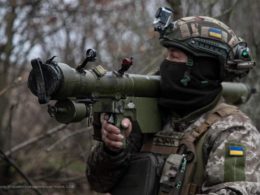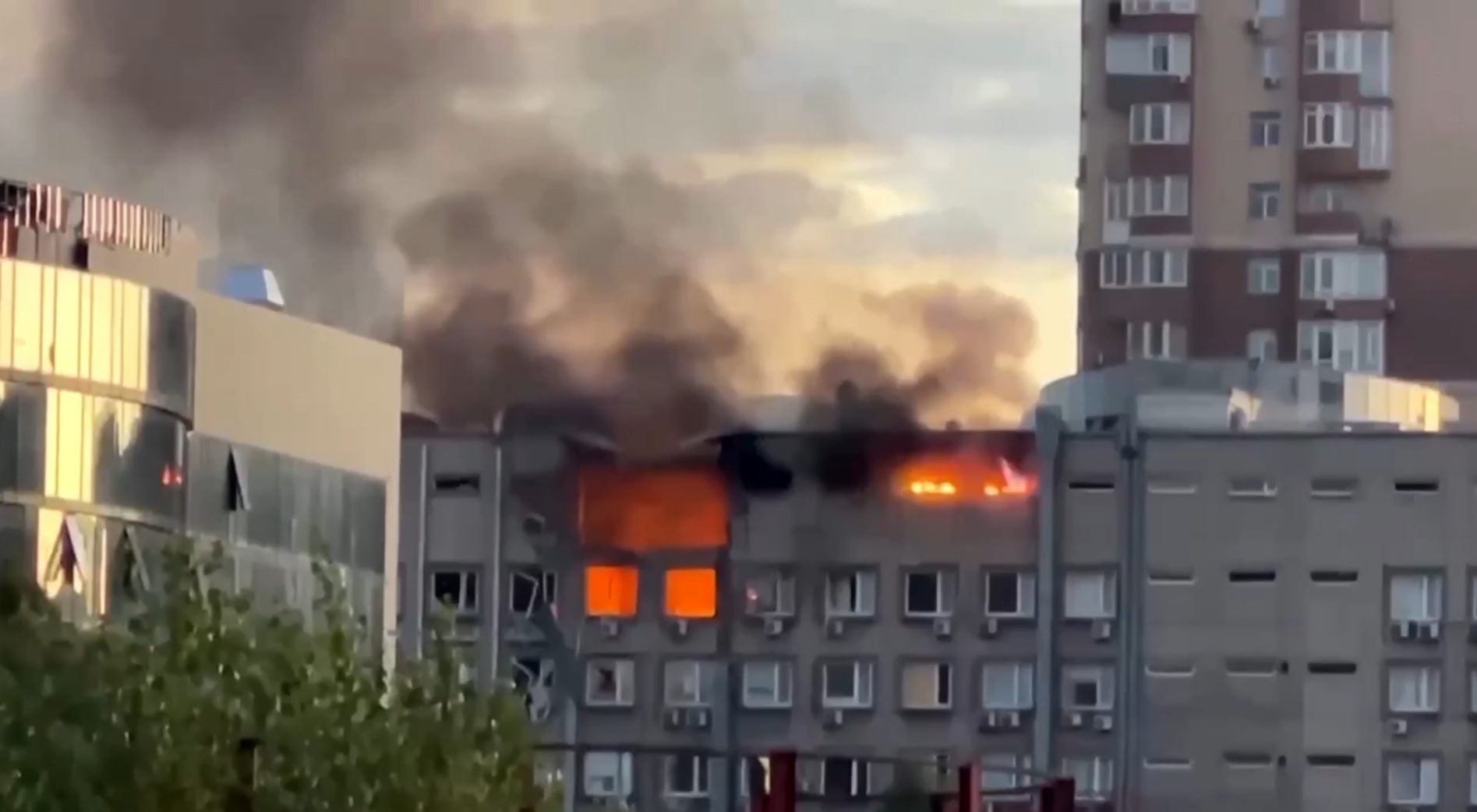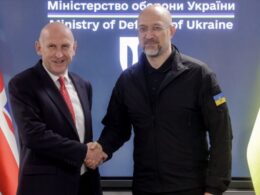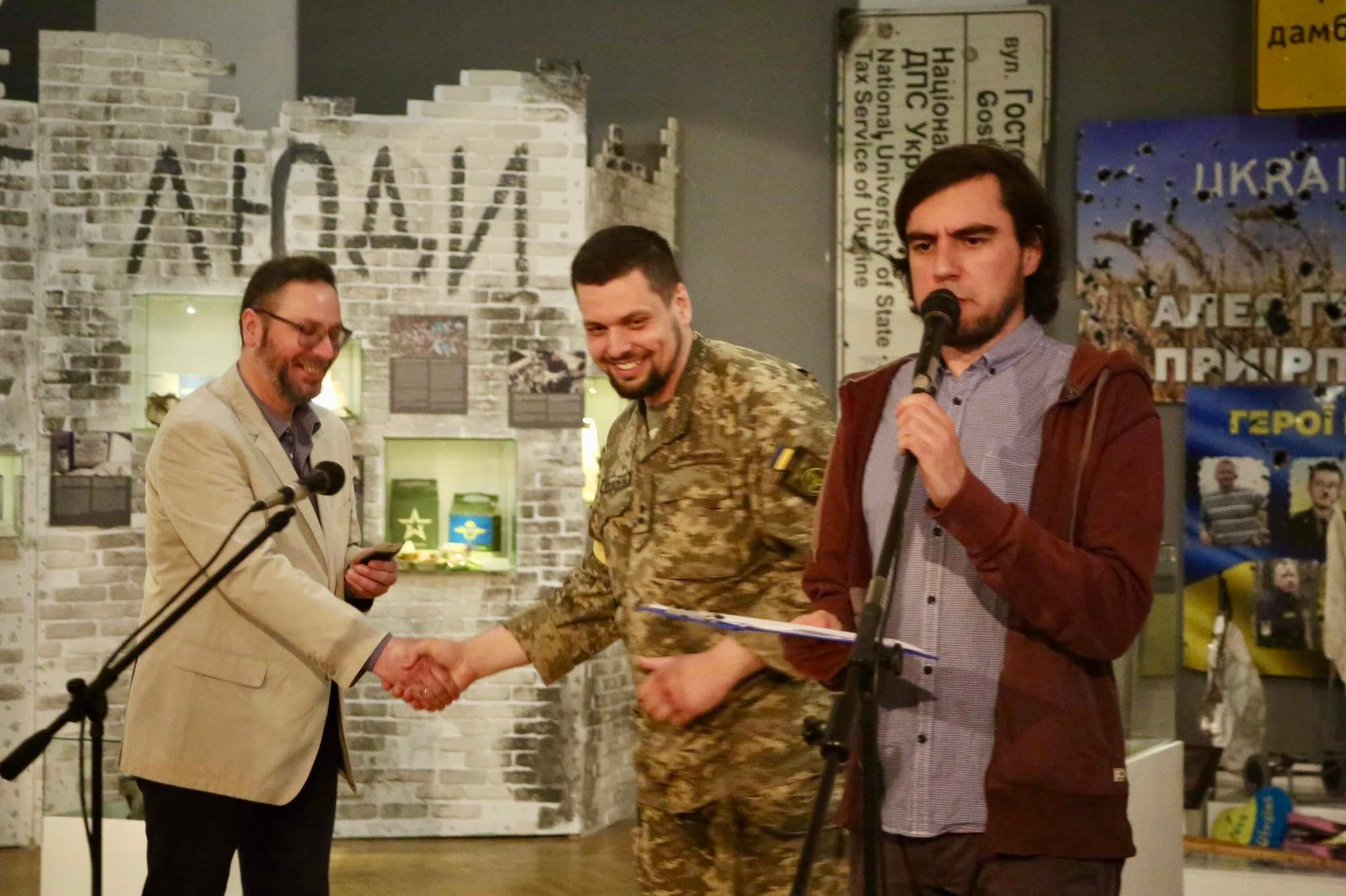
"In fact, our brigade had to be formed on February 24-25 [2022] in the first days of the war," Andriy Kovaliov, press officer for the 112th Territorial Defense Brigade, says. “The brigade was formed from volunteers – motivated Kyivans. We armed them and these people actually immediately went into battle. It was a huge surprise for the Russians. The Russians surely assaulted Kyiv knowing that it had no territorial defense, there were neither enough weapons nor military forces. And instantly tens of thousands of armed people showed up. It was a huge surprise and, to put it mildly, a disappointment for the Russians."
We meet Andriy Kovaliov in Kyiv at the opening of the exhibition “Invasion. Kyiv's shot,” which presents artifacts from the battlefield in Kyiv Oblast. “Invasion” is not precisely the right translation because the Ukrainian word “Навала” also means a big and savage group that invades. The word with subtle connotations particularly suits the situation in 2022, with the Russian assault attempting to overwhelm the Ukrainian forces with the quantity of manpower and equipment. In some places on the outskirts of Kyiv, Russian columns stretched for 60 kilometers.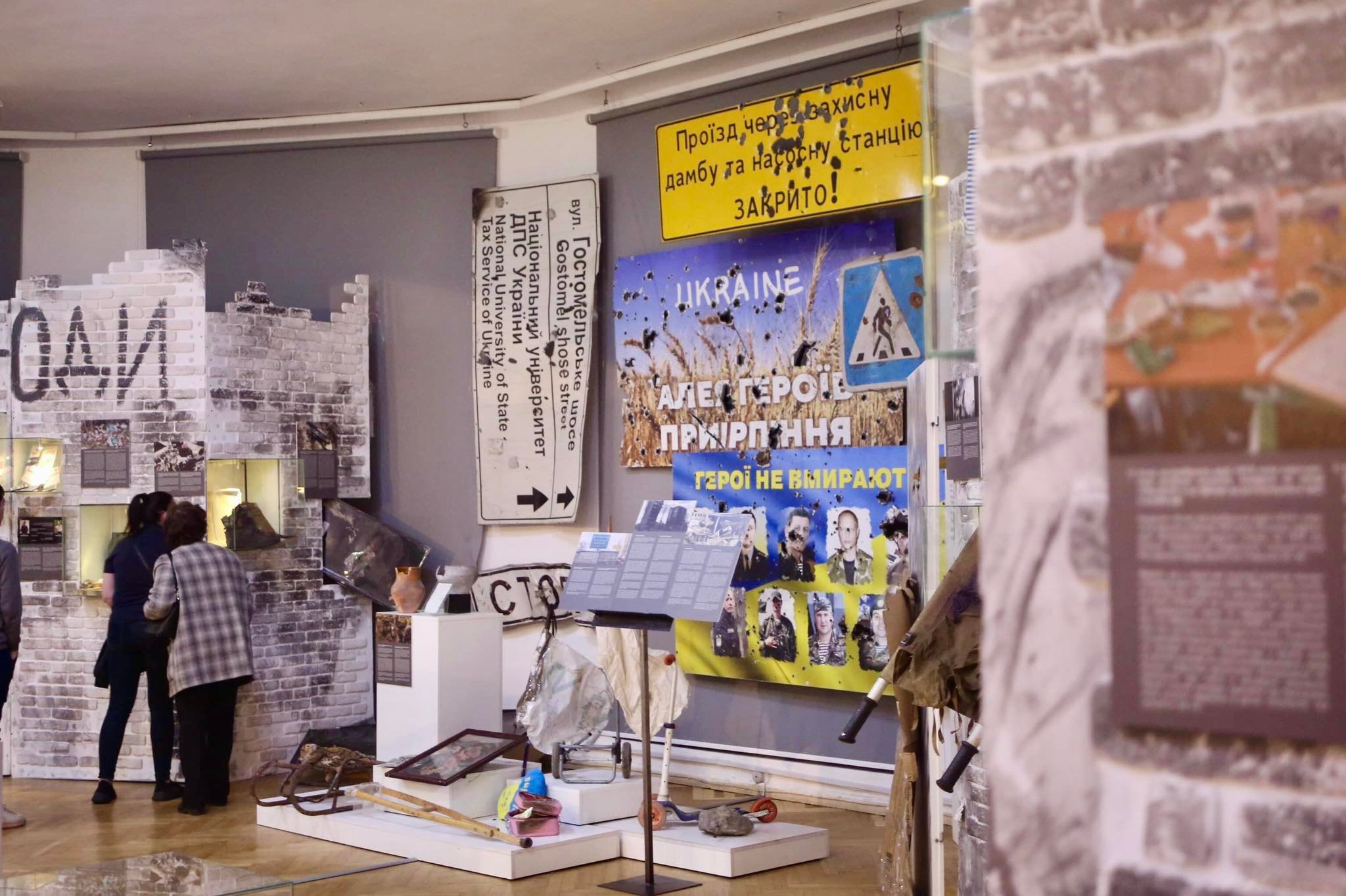
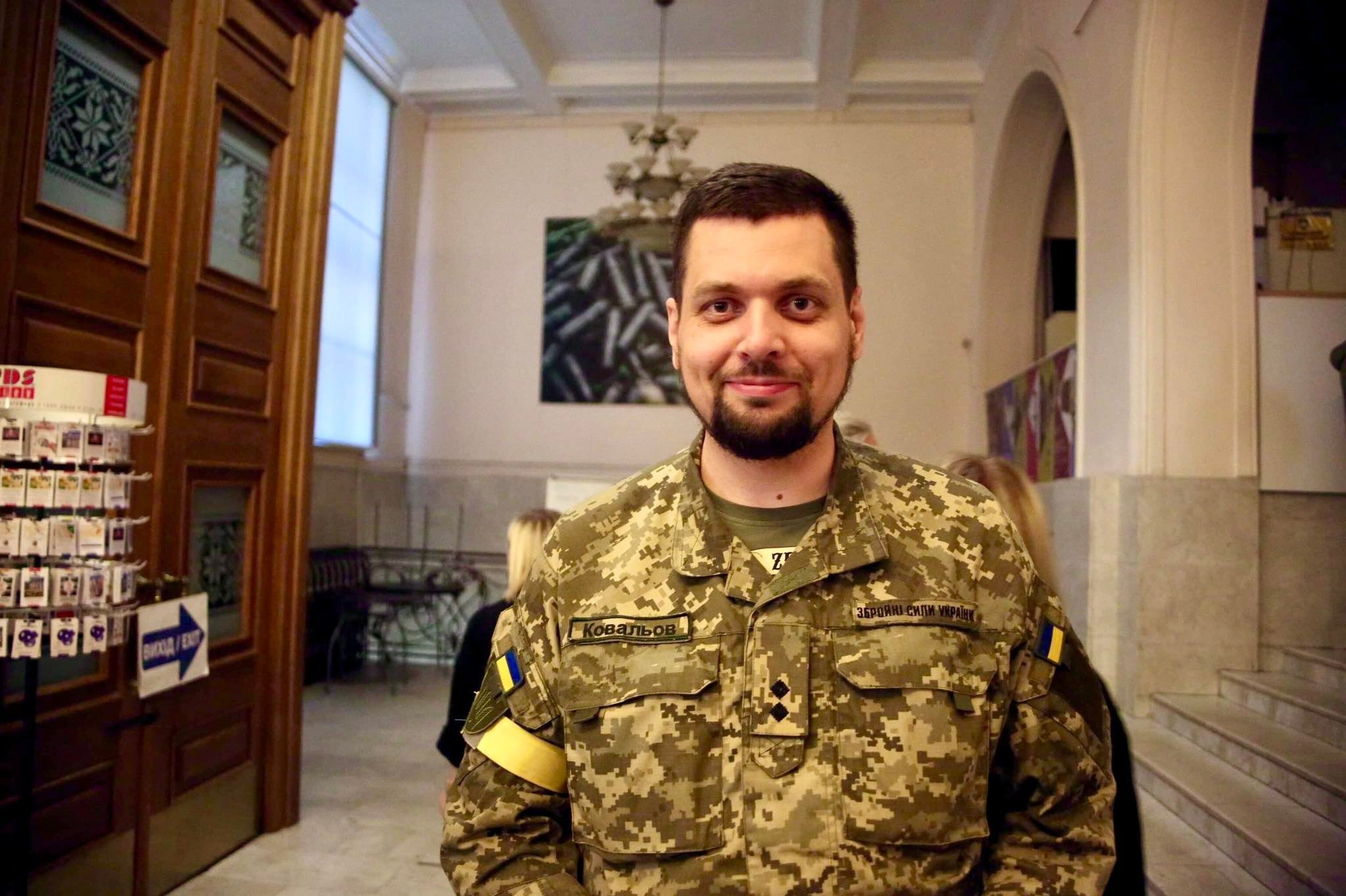
How the Russians were ousted from Kyiv
At the time when Kyiv volunteers enrolled in the ranks of Kyiv's territorial defense, the first battles were already taking place in the capital and its environs. Already in the first days of the full-scale invasion, the Russian military managed to penetrate Obolon, the northernmost district of Kyiv on the right bank of the Dnipro River.Captain Yuriy Myronenko, who took part in the battle for Obolon, was introduced to us by Andriy Kovaliov.
"There was a time when we all said goodbye to life, so overall it was quite easy [to fight]," the captain recalls the days of the battles. "Only when it's over do you realize that it was complete madness, and everyone has children..."
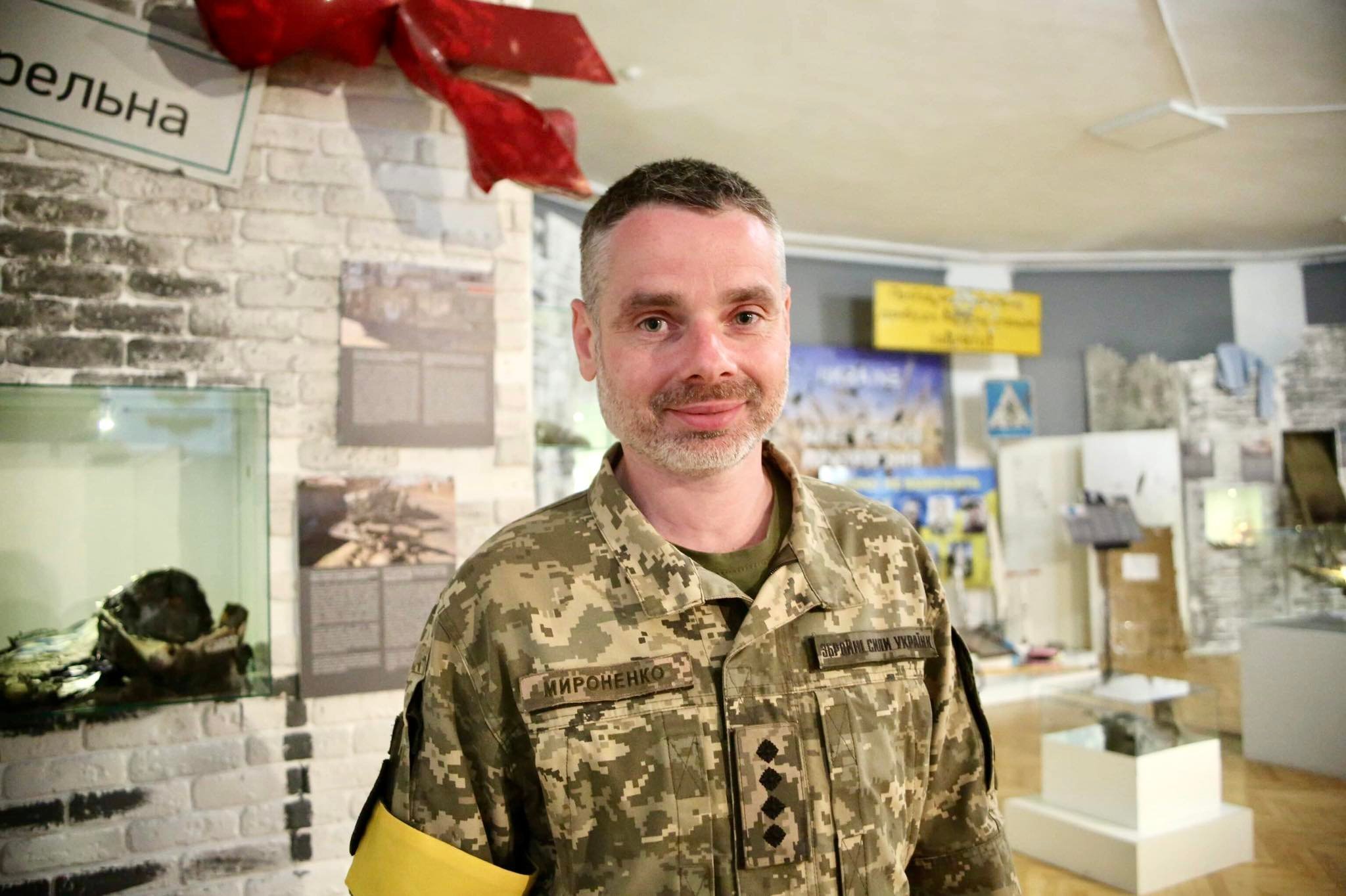
We immediately formed groups of 50-100 people and sent them to positions, and at the same time mining was carried out on the Hostomel highway.It all moved very fast because in the first hours we needed to stop the first Russian groups and show that there were many troops in Kyiv. But we weren’t even creating an illusion: because indeed a huge number of people took up arms. For me, 24, 25, and 26 February were like one day, and only two weeks later from the logs of hostilities did I realize that then we didn't sleep, didn't eat, and indeed lived through it as if it was one day.An incredible number of people came. On the afternoon of February 25, 700 people came to enroll, the crowd was huge, and it took me 20 minutes of aggressive persuasion for people to disperse. The fact that we, battalion officers [Myronenko joined the defense three years ago - Ed], knew each other and understood who was responsible for what helped us to quickly get down to work. And this is what allowed some units to grow tenfold. It is best when there are such groups of 10-15-20 people with an organizational core, as was also the case in other battalions.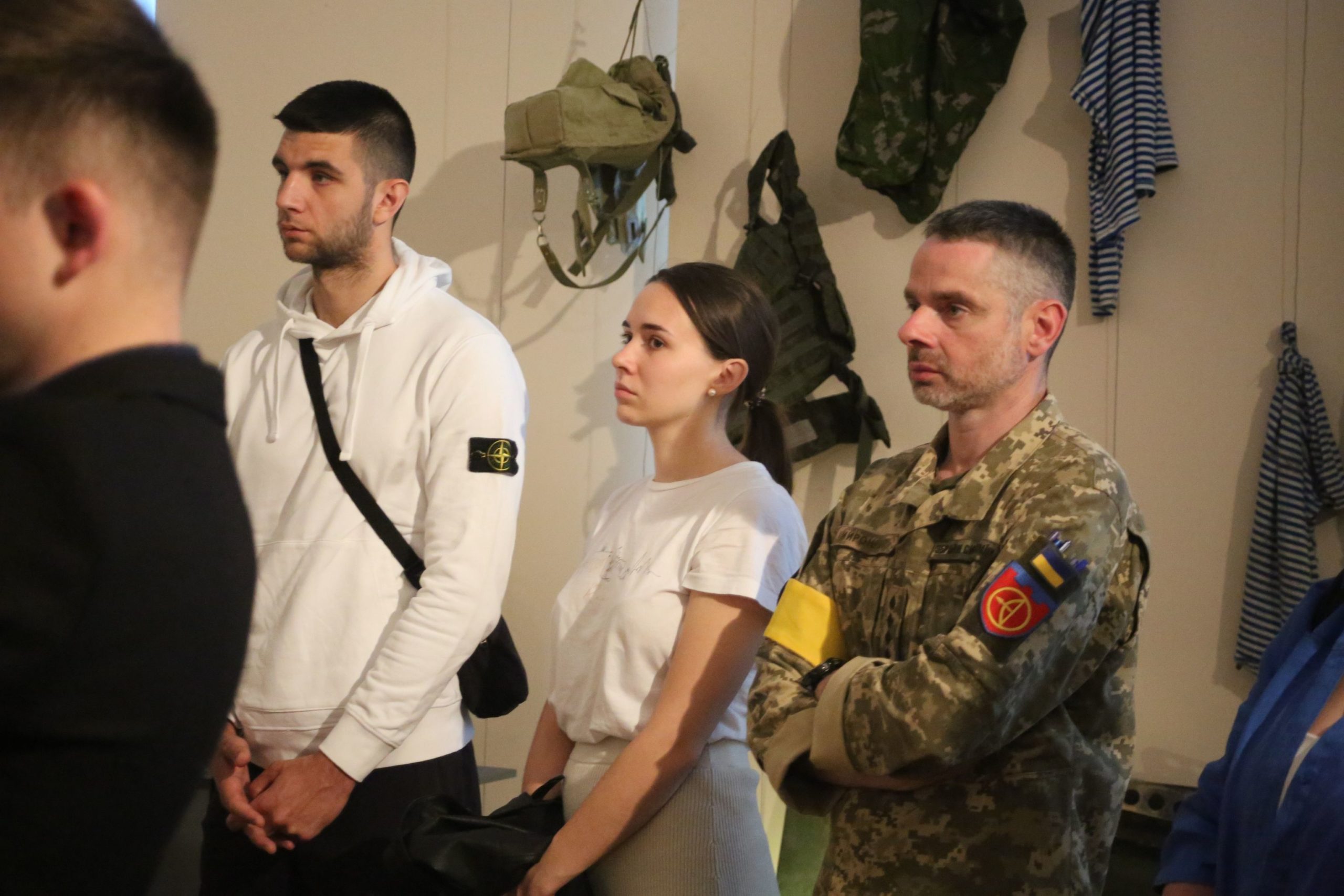
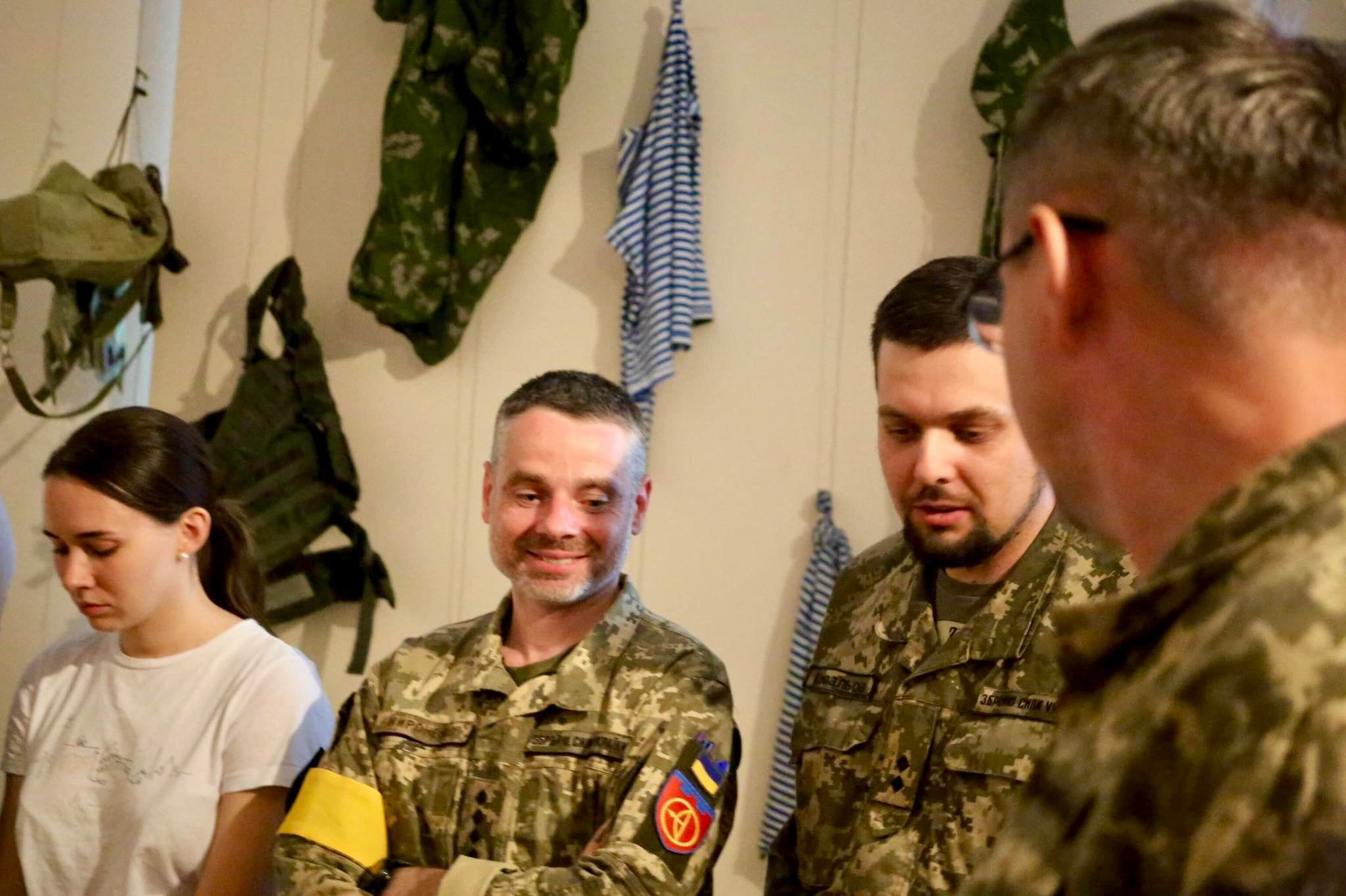
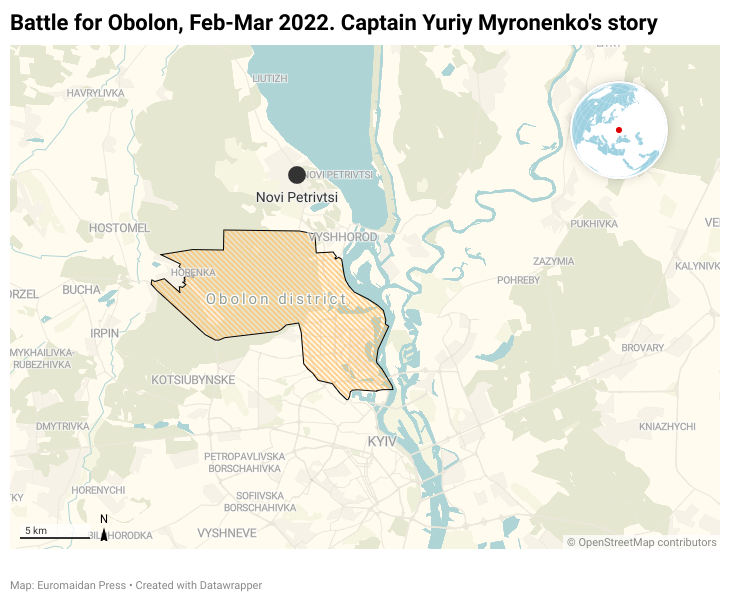
Kyivans trained to repel a Russian invasion since 2014 thanks to grassroots efforts
Although the Territorial Defense replenished during the full-scale invasion, one month after the corresponding law was passed, the idea was promoted much earlier. Ukrainian civil society worked out the main provisions for the law on national resistance in 2017-2018.Many of them were copied in the solutions proposed in 2021 by the current government, says Vladyslav, a member of the Ukrainian Legion NGO, which together with other NGOs promoted territorial defense in Ukraine in 2016. In parallel, the Ukrainian Legion has been teaching basic military knowledge to anyone since 2014. Thanks to this NGO and other paramilitary organizations in Ukraine, some people who joined the territorial defense in 2022 already had some military skills. While Kyiv only had several hundred officially registered territorial defense reservists on February 24, a whole 5,000 had completed a month-long course in military skills by the Ukrainian Legion alone.We meet Vladyslav at the Park of Ukrainian Defenders in Kyiv, a spot he chose himself. It was established in 2019, and in its center lies a symbolic shell from a 125-millimeter projectile, placed here in 2016 at the initiative of veterans of the 2014 war in Donbas.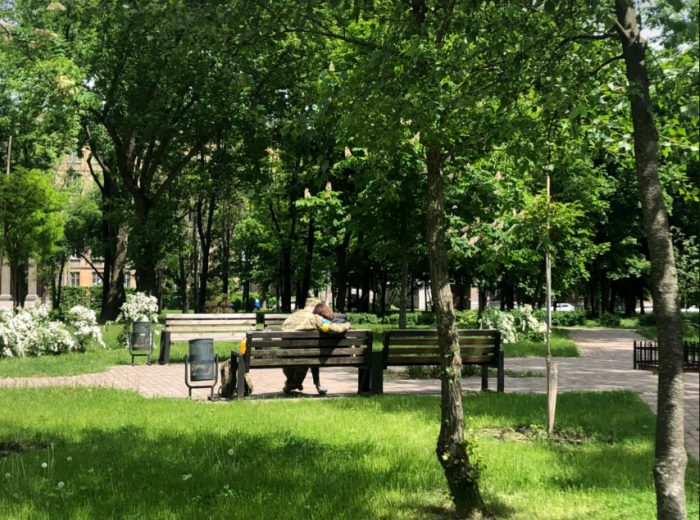
"After studying for a year at the Military Department, I realized that if we were sent into hot spots, we could survive for a week or so. So I started looking for courses where I could speed up my military skills."
The Military Department has a year-long state training program for reserve officers, but as of 2014 the program was mostly low quality. The course offered by the Ukrainian Legion NGO essentially teaches the same skills as the Military Department, but better. Along with general military training, it allows participants to choose an area of specialization e.g., tactical medicine, engineering, mine safety, topography, and orientation. The basic NGO course lasts a month and is free, with graduates then becoming a member of the organization and practicing regularly. Having taken the course in 2015, Vladyslav decided to become a member of the Ukrainian Legion.
“I’m grateful to the Legion because in the first days [of the full-scale Russian invasion], those who were already engaged in paramilitary organizations were ready, they had already collected all the things they required in backpacks, and at the first call – and some even without a call – they went to their military units,” Vladyslav says.
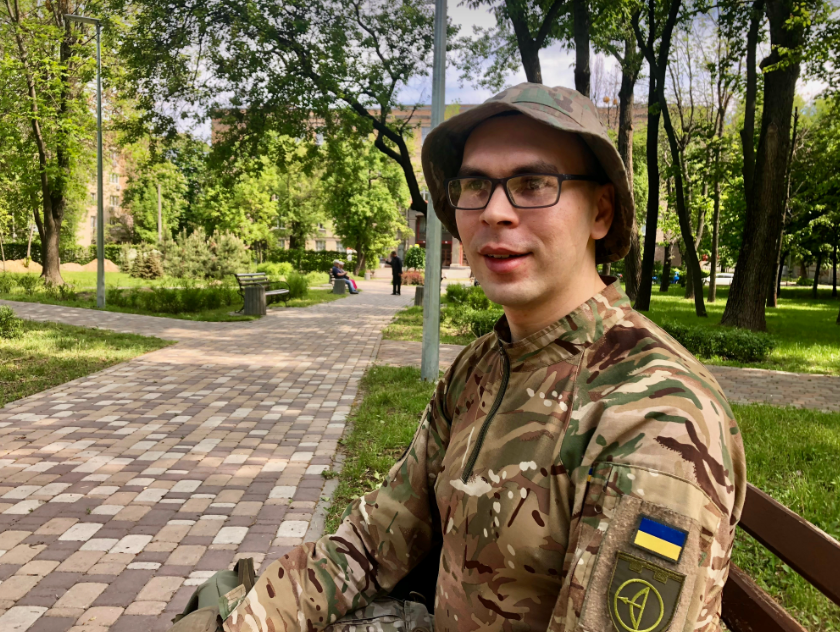
“Not everyone who took the course at the Ukrainian Legion joined the Armed Forces at once – some for reasons of health or because they did not trust the command at that time or because of principles or mentality. But experience has shown that sooner or later we still need it.”
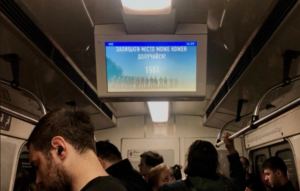
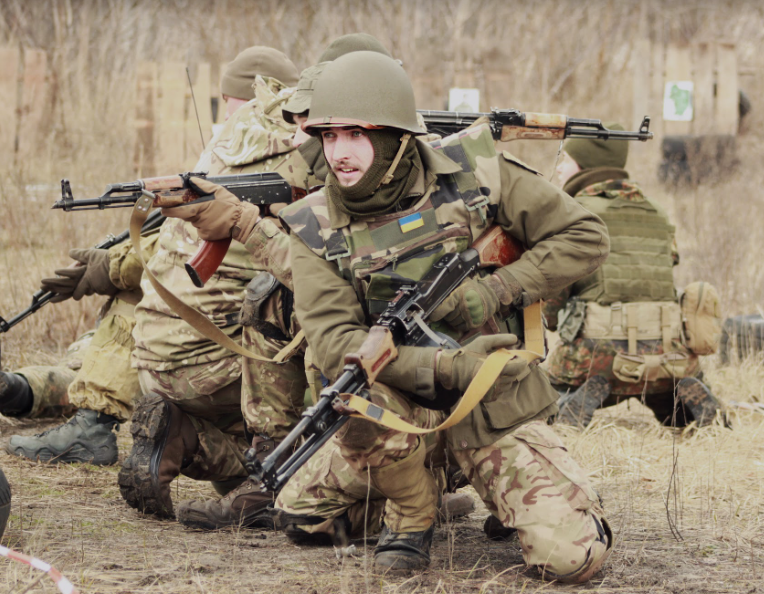
"Positions [created for training] were lightly covered there, so everything was promptly restored and at these positions the boys and girls were fighting."
After the Russian invasion of the east of the country in 2014, Kyivans had become increasingly motivated to gain military skills and be prepared for a potential Russian attack. In Kyiv, says Vladyslav. There was a constant flow of those who wanted to attend the shooting days as part of territorial defense training, which was underfinanced."People
used to pay bribes to escape the army and now people are doing everything to join the army. People are motivated, they prepare themselves, and they want to prepare together with others in the units [during the training days],” Vladyslav says.https://euromaidanpress.com/2022/03/17/how-i-bribed-my-way-into-joining-ukraines-territorial-defense-forces/?__cf_chl_rt_tk=HIQ_Kf_o3UIqHptE5zYQ5lbZ3QpB9cnELEL3k6vYGeU-1657053605-0-gaNycGzNDiUUnderfunding in recent years has included restrictions on buses and petrol levies."With all due respect to what our president is already doing after the full invasion, there are many negative factors that have affected the territorial defense," says Vladyslav.Not only the authorities but also civil society was skeptical that a full-scale invasion would begin. When the invasion did not happen several times on the expected dates, such as 18 February, many started to joke about it.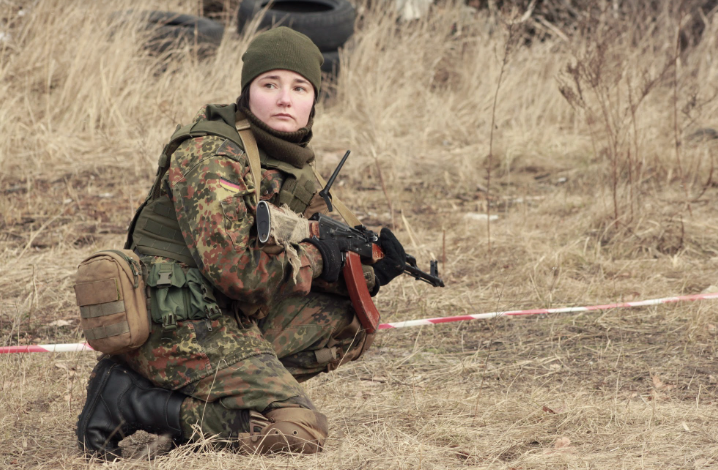
"On February 22, everyone was relaxed. Well, at the same time, reservists and armed forces were prepared. I have a memento from unloading weapons before the [full-scale] invasion,” Vladyslav shows us a scar on his hand.
In the spring of 2021, when the first signals of a large-scale Russian invasion of Ukraine began to appear, reservists and some services were brought to full readiness, Vladyslav recounts. Some experts attribute the threat of invasion to the construction of Nord Stream-2, which allows Russia to sell gas to Europe bypassing Ukraine's gas transport system. Revenues from energy exports allow Russia to finance its war against Ukraine.Vladyslav says that many of his friends had been preparing for a full-scale invasion since the spring of 2021.
"Yet Ukraine is very diverse. If a family member does paramilitary training, this does not guarantee that all family members will take it seriously," Vladyslav confesses.
Some activists, Vladyslav says, organized a public inspection of bomb shelters via a Facebook group 2-3 weeks before the full-scale invasion.
“Kyiv was saved because so many Kyivans joined the territorial defense”
The day of the invasion, however, was unexpected for Vladyslav.
"Early in the morning I woke up to a phone call from the chief of staff, whom I had tried to call on the previous evening, and he says, 'Vlad, everything's fine, wait for further instructions.' I thought he said it just in case. But nevertheless I turned on the TV – there were some cartoon about geese and news line below with ‘The war has begun in Ukraine’ in a big red letters. After all, until the final days public communication was conducted in such a way that invasion was not to be expected.”
In the first ten days of the full-scale invasion, Vladyslav says, he had to perform up to nine different roles in parallel. For example, the influx of people signing up for territorial defense created additional tasks for the staff such as recording the newcomers. Vladyslav did it during the first four days.
“We often stayed up until the morning. Many of those who came on February 24 did not feel any difference between the first, second, and third day, because few slept then. People were even committed riots in the queues for the opportunity to get into the territorial defense faster."
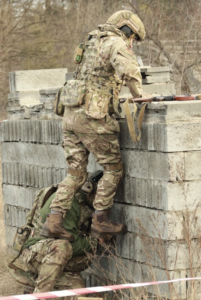
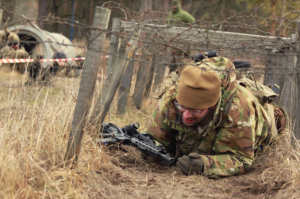 Up to four times more people than the staff envisioned enrolled in the first five days of the full-scale Russian invasion. There were people of all ages and occupations – brothers, parents and sons, young couples came. Vladyslav is convinced that Kyiv was saved due to many Kyivans joining the territorial defense.There were also people who wanted to help with organizational work, Vladyslav says. “They said: I can't shoot, but I want to be useful. They were invited to help with the paperwork in the office.” While the volunteers were recruiting people, the officers began to show the basics of how to use weapons correctly and safely.In a few days, Vladyslav says, when things settled down, everyone started doing their main job, not patching up holes. At the same time, Vladyslav established contacts between the staff and representatives of the newly created battalions, passed on his knowledge to "entrants," as he calls the new servicemen of the territorial defense, and also helped to distribute supplies. It started with Vladyslav asking a fighter who had returned from his position what he needed. He made lists of who needed what. People started to call and offer help:“Vladyslav, we are bringing you a whole truckload of goods.""We are bringing half a train car of food for you."Vladyslav still does not know how some people knew about him and approached him."I think we are winning because there are volunteers in Ukraine -- not only now, but since 2014 and all these years," he says.
Up to four times more people than the staff envisioned enrolled in the first five days of the full-scale Russian invasion. There were people of all ages and occupations – brothers, parents and sons, young couples came. Vladyslav is convinced that Kyiv was saved due to many Kyivans joining the territorial defense.There were also people who wanted to help with organizational work, Vladyslav says. “They said: I can't shoot, but I want to be useful. They were invited to help with the paperwork in the office.” While the volunteers were recruiting people, the officers began to show the basics of how to use weapons correctly and safely.In a few days, Vladyslav says, when things settled down, everyone started doing their main job, not patching up holes. At the same time, Vladyslav established contacts between the staff and representatives of the newly created battalions, passed on his knowledge to "entrants," as he calls the new servicemen of the territorial defense, and also helped to distribute supplies. It started with Vladyslav asking a fighter who had returned from his position what he needed. He made lists of who needed what. People started to call and offer help:“Vladyslav, we are bringing you a whole truckload of goods.""We are bringing half a train car of food for you."Vladyslav still does not know how some people knew about him and approached him."I think we are winning because there are volunteers in Ukraine -- not only now, but since 2014 and all these years," he says.
“Ukrainians have their positive and negative sides. The downside is that many people like to put things off until the last minute. We are still digging ourselves out of what we could have done, but did not do, before the full-scale invasion. And here heroism begins to surface. I once asked one of the commanders what heroism is, and he told me: ‘Heroism is manifested where some positions surrender.’ In the case of volunteers – if we did not have any food, and they brought it - that is, they are heroes. Someone did not work somewhere, so somebody else had to step in. And thus there is heroism."
In the headquarters in Kyiv, there was often a feeling that the next minute it would be necessary to grab arms and fight.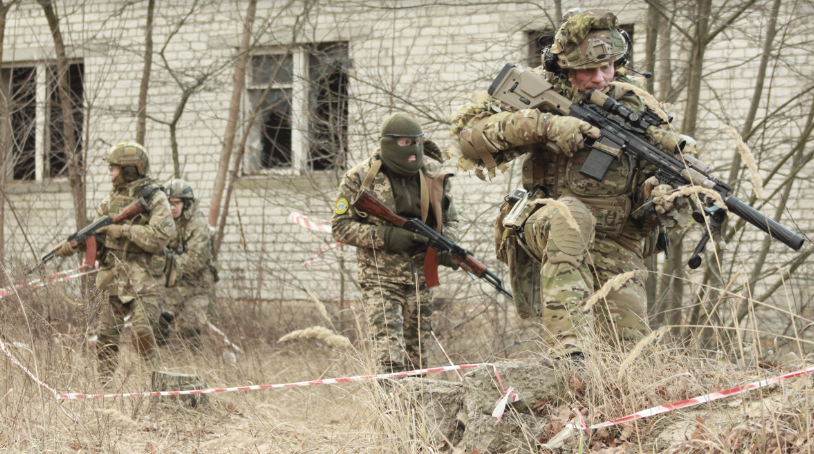
"For the first four days, I was sitting in a helmet, and literally as soon as I took off my helmet, within five to ten minutes, the outer wall began to collapse and fell on my head," he recalls.
At the same time, a few days after the invasion Vladyslav was diagnosed with bilateral pneumonia, but he did not stop working even when in the hospital.
"Many in our unit were upset that they were not directly shooting at the enemy. But in fact, each of us is in his place and performs the tasks that are set before us. If logistics do not work, those who kill enemies will not be provided with ammunition and food, if psychologists do not work, the fighting spirit will weaken, without cooks soldiers will not be fed, and if there is no personnel service, we will not have anyone at all.”
Vladyslav was disappointed that then, he could not take an active combat role. But that changed in March, and now he leads a mortar platoon.
“It was a new area for me. When you prepare for Kalashnikov shooting for many years, it gets boring. And when you master a new task, and you have a few weeks to master this weapon and there are also personnel who you have to transfer new knowledge and skills to, then it is a different approach and additional motivation.”
https://euromaidanpress.com/2022/07/01/theology-professor-who-hunted-for-russian-invaders-near-kyiv-and-in-chornobyl-zone/Now Vladyslav's mortar unit is waiting for the new weapons to come. But even now, until the unit is formed and ready to go to the frontline, the guys from the unit volunteer to the front earlier.
"On the one hand, it is good that we have such motivated people, and on the other hand there must be a well-coordinated unit, only then will we be sent somewhere."
Military and political perspectives after the war
In line with the situation’s evolution, Vladyslav points out possible stages of the de-occupation of Ukraine:
“I think many people will make efforts to bring back the south – Mykolayiv, Kherson and Zaporizhzhia oblasts – this year. We may return Donbas by next summer, but there will be a lot of non-military work there: with the remaining people there and counter-propaganda. And I think we will be returning Crimea later still, because it has actually become a huge military base for the Russian Federation. But despite the fact that Russians are starting to restore the Crimean canal, there is huge Ukrainian resistance – we are a people who love freedom and are ready and willing to fight for it."
Yet like many activists who we spoke to in Kyiv, Vladyslav believes that all the problems that existed before the full-scale invasion will remain after it is over. Vladyslav is especially concerned about language. His personal story is similar to that of many Ukrainians whose parents moved to the cities of the Soviet Union, where an aggressive policy of Russification was pursued. Vladyslav's parents began speaking Russian when they moved to Kyiv, but because his grandparents spoke Ukrainian, the man decided to speak more Ukrainian.
“I realized that if I start speaking more and more Ukrainian, maybe someone from my environment will make the same choice. In time, my parents began to speak Ukrainian with me.”
From his observations, during the 2022 Russian invasion of Kyiv Oblast, Russian was barely heard in the capital.Now, with the Russian troops having left Kyiv it is calmer in the capital, but not completely quiet, Vladyslav says.
"A colleague told me recently: There is no war in Kyiv anymore, return your weapons, go back to work. In fact, this is not the case. Although many think the enemy has retreated, we ocassionally encounter subversive groups near the facilities we work at.”
In March, Vladyslav recalls, when there were many sabotage groups coming out of the woods in Kyiv, Kyivans often caught "frightened Russians" and handed them over to the armed forces.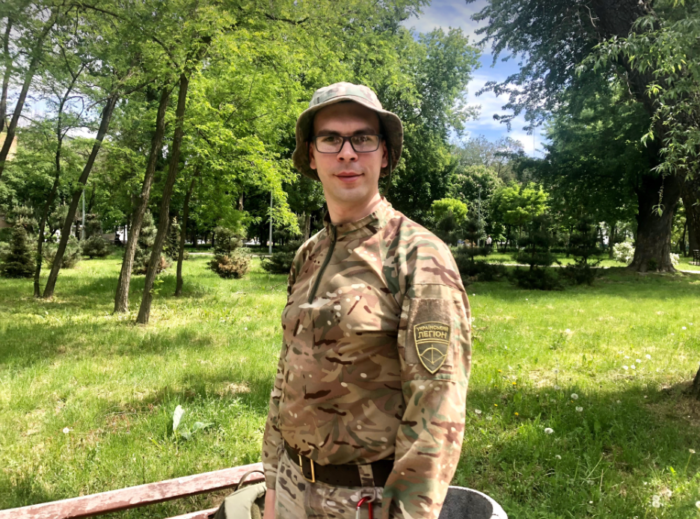
"At first we thought: so where have you been for eight years – a very first impression based on emotions. And then we came to the realization that at any time there will be people who will wake up one day and want to prepare. Therefore, if we can – and we can – then we teach. Those who have already retired due to age (60) have already worked with a new group of people for two weeks.”
While Ukraine remains at war with Russia, the 45th group of recruits is being trained in the Ukrainian Legion.
Related:
- Lviv Garrison Church chaplains help soldiers find God amid war. And a pair of good boots
- Ukrainian theology professor turned sniper tells how to hunt for Russian invaders
- “Russians are wrecking everything out of envy”: Ukrainian recalls harrowing escape, shares thoughts about Russia
- “They talked on the phone until his father’s heart stopped.” How Russia’s...
- How Ukraine is building its territorial defense
- I am a researcher, not a military man. But there is war...
- “Dearest daughter, it’s total Hell. Death is everywhere” – Ukrainian father on the frontline


